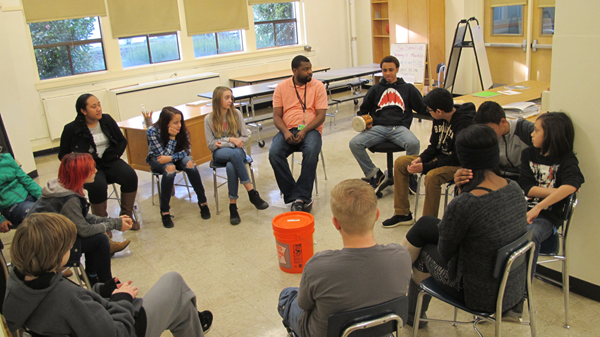1.3 Making the Shift
Making the change from a punitive to a restorative culture is a significant undertaking, and can be quite challenging in the beginning for everyone involved. It will occur over time and as a result of sustained effort. The activities described in this course module will assist everyone with creating and maintaining a restorative culture. Successful implementation can only occur when supported by a whole-school approach to restorative practices, including community building as part of the daily routine and the inclusion of restorative practices in the school’s disciplinary policies. Change tends to happen slowly, so it is essential to persevere and recognize when your efforts have taken root and are yielding results.
Here are some indicators by which you can recognize the emergence of restorative cultures in classrooms:
- Students have experience dealing with conflicts and feel reasonably safe and supported in doing so.
- The class works together to identify and solve problems that interfere with learning.
- While the teacher is still in charge, there is a shift to shared responsibility for behavior management. It becomes more of a team effort, with most of the students on the team.
- Through restorative practices, students’ needs for social and emotional learning are supported in positive ways. Over the course of a year this can be observable as growth in academic skills and knowledge.
- Conflicts are often managed by gathering in circles, following circle guidelines, and using restorative questions as a framework for a dialogue in which understanding is reached and there is an agreement on how to make things right.
Like most things, practice makes perfect. It may feel like students are taking “two steps forward, one step back.” It can be frustrating to watch a student successfully resolve an issue using a restorative dialogue, then almost immediately revert back to their old ways. We may be tempted to think that the learning is not taking place; but this is probably not the case. Consider what would happen if we gave up on mathematics because students keep getting problems wrong. We wouldn’t say, “Math doesn’t work”. As is the case with all subjects, social and emotional learning (including restorative dialogue) is a process in which setbacks are best viewed as opportunities for inquiry and clarification. If we remember that “failures” are a natural part of how learning happens; then as educators, we can view repeat offenses as an opportunity for students to conduct their own research into what works and does not work for them. An approach that can be used during circle time, to discuss any topic, is to have students engage in dialogue about what has worked and what didn’t work for them.
Ask the following questions:
- What strategy worked well for solving the problem?
- What advice would you give your classmates about solving conflicts?

